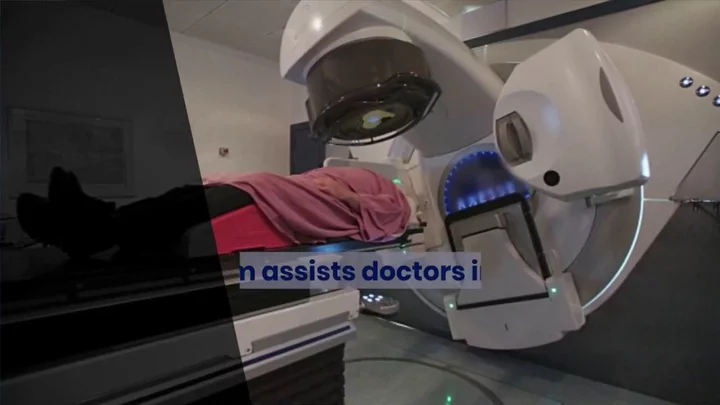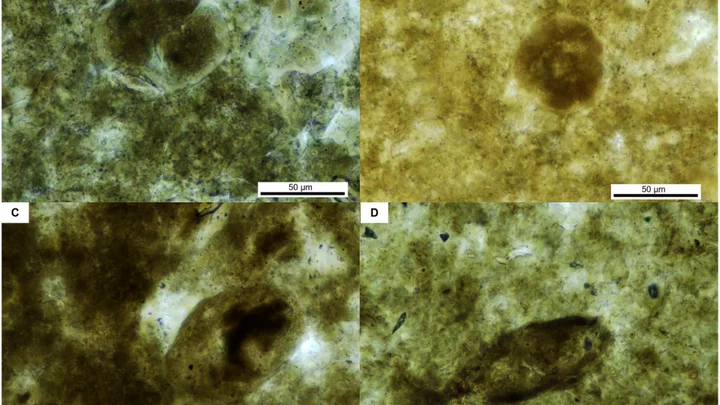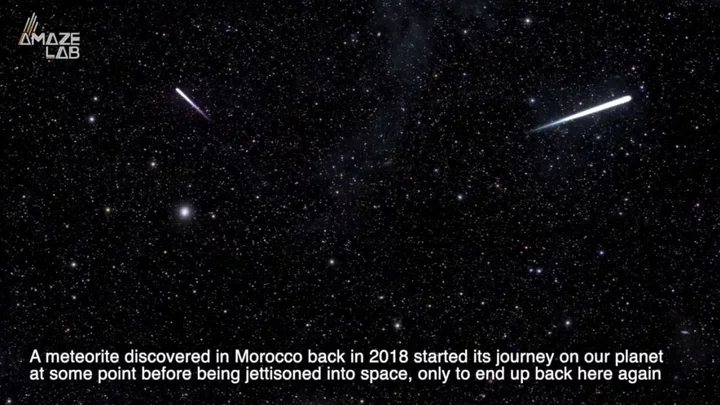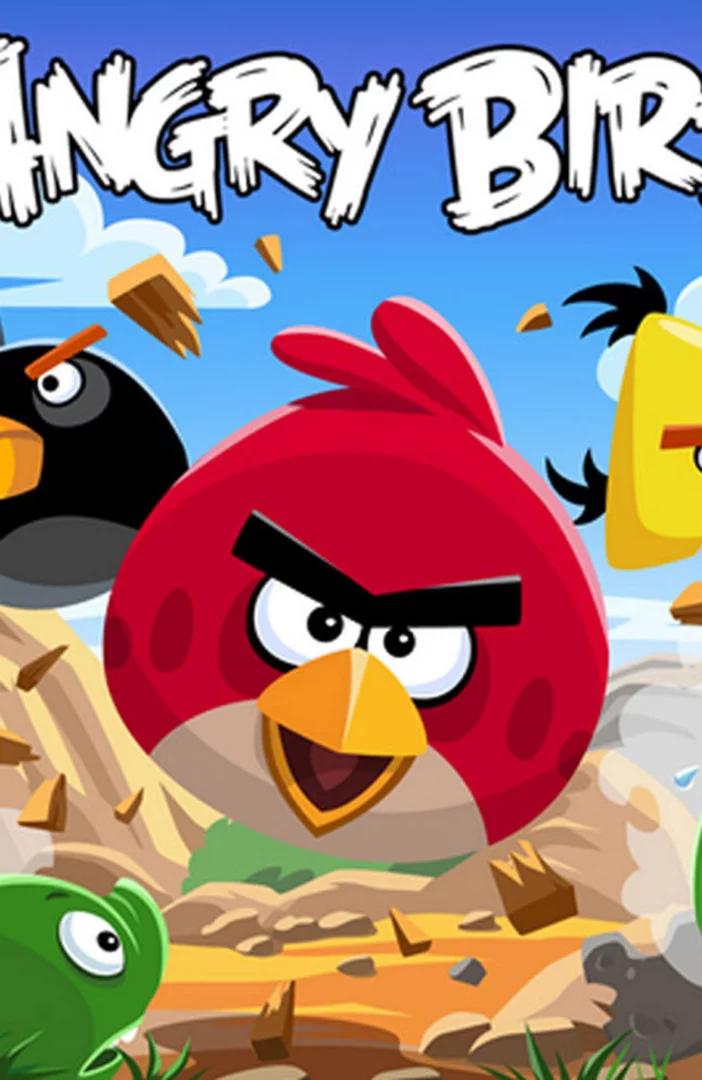
Parents of nine-year-old high school graduate reveal their number one parenting tip
David Balogun is a normal kid who competes in paper airplane races with his younger sister, Eliana and struggles to sit still, but he is also one of the youngest people in the United States to receive a high school diploma. In late January, Balogun graduated from Reach Cyber Charter School, which is a tuition-free online school in Pennsylvania. This month he will be starting classes at Southern New Hampshire University as a full-time student. Balogun and his parents, Ronya and Henry, spoke about what it was, and still is, like raising someone with a high intellect on CNBC Make It. The couple said they first tested their son’s intelligence when he was six years old. After that, they began to rethink any parenting philosophies they previously had. “There’s no book on it,” Ronya said. “You’ve got to develop a different mindset as a parent,” Henry added. “It’s not always easy when your son is asking you questions constantly. You have to keep answering the questions, because you don’t want to say, ‘Just leave me alone.’” Because of David’s unique circumstances, they’ve developed their own number one rule: When a system isn’t built for your child, don’t try to fix your child. Try to fix the system. Ronya said when David was in first grade, a regular classroom wasn’t working anymore, noting that sometimes his peers would listen to him more than the teacher. So they looked into their state’s gifted programs, which also proved to not be rigorous enough for their nine year old. In 2020, his parents enrolled him in Reach which allowed him to individualise his curriculum and take high school level classes. Although that didn’t come without challenges, including multiple calls to The College Board because David’s birthdate was too young to enroll in advanced placement exams. As for deciding on college, Ronya said she had to put her foot down mentioning she didn’t want David in a class filled with 20 year olds. “It’s a different adaptation that we don’t have in the United States of America yet. It’s very scary, you can’t find this,” she said. “Sometimes I can’t fix the system, but there are other unconventional choices and solutions to help lead my son through his journey to fulfill his dreams.” Trust is also a big part in parenting David, his parents said. They mentioned that, when he was learning specific skills like adding and subtracting negative numbers before he was taught, they had to believe he knew how. “I can’t tell him, ‘This is what you know,’ because I’m not in his brain,” Ronya said. “I have to trust him to be partially leading the way.” Although there are some boundaries in this trust, as David came home one day claiming he now knew where babies came from. His mother was able to briefly give him some information on reproductive anatomy before putting the conversation to a stop. “Mind you, at this moment, I’m talking to a six year old,” Ronya said. In terms of what happens to David beyond college, his parents are unsure and are just figuring it out as they go along. “There is no frame of reference,” Ronya said. “So you know how sometimes when there is no path, you start a new path? Yep, that’s what we’re doing.” The Independent has contacted Ronya and Henry for comment. Read More TikToker urges parents to save old clothes for their children after inheriting mother’s wardrobe Mother criticises ‘double standard’ after husband is praised for taking toddlers to grocery store Mother sparks viral debate for ‘shaming’ parent who refused to give her daughter a slice of cake TikToker urges parents to save all their old clothes for children to inherit Gen X mother goes viral for attack on ‘tired’ American Dream Couple discovers why their child thought ‘mums foam at the mouth while having babies’
2023-08-16 05:52

Red flags you might be missing about your child’s online safety
During the wait for improved online safety laws, tens of thousands of grooming crimes have been recorded. The Online Safety Bill, which is meant to become law this autumn, has encountered numerous delays and changes since it become a proposed legislation. As a result, the children’s charity NSPCC has called on MPs and tech giants to support the Bill, especially since 34,000 online grooming crimes had been recorded by UK police forces over the last six years, since first calling for more robust safety regulations in 2017. Based on data from 42 UK police forces, the NSPCC said that last year, 6,350 offences related to the sexual communication with a child were recorded. Some 5,500 took place against primary school-aged children, and 73% of the crimes were related to Meta-linked platforms or Snapchat. NSPCC chief executive Sir Peter Wanless said: “The number of offences must serve as a reminder of why the Online Safety Bill is so important and why the ground-breaking protections it will give children are desperately needed. “We’re pleased the government has listened and strengthened the legislation so companies must tackle how their sites contribute to child sexual abuse in a tough but proportionate way, including in private messaging.” Here are some of the red flags parents should be on the look out for. Being secretive about how they are spending their time On their website, Childline define grooming as someone building a child’s trust to make a connection in order to do something sexual or illegal. “Studies show parental supervision typically declines as children get older, however online abuse does not,” said Mark Bentley, safeguarding and cyber security lead at charity The National Grid for Learning (LGfL). From being secretive to omitting relevant information, changes in behaviour can vary from child to child. But it’s something for all parents to be mindful of when their child starts using social media more. “Unfortunately, as in many areas of child protection, indicators of abuse can often mirror natural markers of growing up,” said Bentley. “As children and adolescents develop, they seek independence from parents, engage in risk taking and have changes in mood and friendship group. “Nonetheless, these markers remain vital to watch out for, even if it is just to support your growing child. Those who are being groomed online are much more likely to be defensive and secretive about phone usage and loathed to be separated from their device.” Having unexplained gifts, big or small Buying gifts for children, whether big or small, can be another grooming technique used to flatter children and their families. “Some groomers have been known to provide alternative phones just to contact them, and this is always a red flag if you suspect your child may have a secondary device,” said Bentley. They are spending too much time onlineSocial media may promote negative experiences if no boundaries have been established.“Of course, some of these [red] flags can also be a sign of the child going through adolescence but it’s important to discuss any unusual behaviour with them as soon as possible,” said Simon Newman, member of International Cyber Expo’s advisory council and of the Cyber Resilience Centre for London.“The way groomers target children varies, but is often done through social media sites, text messages and apps, emails or online forums – particularly gaming sites.”They develop friendships with a much older person Children and young people can be groomed by a stranger or by someone they know – such as a family member, friend or professional, according to NSPCC. But the age gap between a child and their groomer can also be relatively small. The groomer may also work towards building a relationship with the family to gain trust, so they can be left alone with the child. “There are various models of the stages of grooming, but at heart it revolves around building up trust and making a child feel understood and listened to in a way they do not feel elsewhere, and then breaking down the links of trust to family, school, friends and other adults,” said Bentley. “Any parent thinking that this might be happening should definitely reach out for help.” Read More Charity boss speaks out over ‘traumatic’ encounter with royal aide Ukraine war’s heaviest fight rages in east - follow live Rumer Willis says she is ‘grateful’ to her body following birth of daughter Sugary cereals and yoghurts must remove child-friendly packaging – health group Clever kitchen storage solutions to clear the clutter
2023-08-15 22:57

Elon Musk has updated the X logo again and everyone said the same thing
The logo of “X” (formerly known as Twitter) has changed again and everyone is saying the same thing. Since Elon Musk took over the social media platform Twitter, he has implemented some major changes, one of the biggest being a complete rebrand to “X” which left industry experts baffled. As part of the rebrand, the iconic logo of 17 years was changed from the famous sky blue and white bird logo to a black and white X that some have compared to resembling a porn site. Now, Musk has made another update to the default app icon logo, adding some white marks to the black background behind the X to give it a kind of worn grunge effect. But, the subtle change has been mercilessly mocked by X users and simply left everyone increasingly yearning to have the old bird logo back. Sign up to our free Indy100 weekly newsletter “Impressive how they managed to make it look ever tackier,” one person argued. Another said: “Not the f**king grunge_overlay_04.png texture.” Someone else wrote: “Well it’s def not beating porn site allegations any time soon.” Among the criticism, others called for the app logo to be changed back to its original state. “They should update to this,” one person wrote. According to the number of likes the tweet has garnered, it would appear thousands of others agree. Have your say in our news democracy. Click the upvote icon at the top of the page to help raise this article through the indy100 rankings.
2023-08-15 19:26

Scientists discover continent that had been missing for 375 years
Geoscientists discovered a continent that had been hiding in plain sight for almost 375 years. Historically, there's been speculation about whether a continent known as Zealandia or Te Riu-a-Māui in the Māori language exists. According to TN News, Zealandia is 1.89 million square miles in size. It was part of a supercontinent called Gondwana, which included most of Western Antarctica and Eastern Australia, over 500 million years ago. It was first said to be first discovered in 1642 by Dutch businessman and sailor Abel Tasman, who was desperate to uncover the "Great Southern Continent". Despite failing to find the new land, he met the local Māori, who were initially displeased by his arrival. However, they went on to provide valuable information about the surrounding land, including the existence of a large landmass to the east. Sign up for our free Indy100 weekly newsletter It wasn't until 2017 that geologists discovered the continent had been hiding in plain sight all along. Scientists agreed on the existence of Zealandia, which started to "pull away" from Gondwana for reasons scientists are still trying to understand. Most of the newfound continent is underwater and has been used as an example by geologists at the Zealand Crown Research Institute GNS Science on how something "very obvious" can take a while to uncover. "[It's] a process which we don't completely understand yet, Zealandia started to be pulled away," Tulloch explained. His colleague Nick Mortimer, who led the study, joked that it was "kind of cool" before explaining: "If you think about it, every continent on the planet has different countries on it, [but] there are only three territories on Zealandia." Have your say in our news democracy. Click the upvote icon at the top of the page to help raise this article through the indy100 rankings.
2023-08-14 22:17

Experts have pinpointed exactly when society will collapse
A prediction about when society is most likely to collapse, made by scientists in the 1970s, has resurfaced – and it looks pretty bleak. Scientists at the Massachusetts Institute of Technology (MIT) used a computer to model patterns like population, natural resources and energy usage. The study, published by Club of Rome, picked out when these factors could hit “limits to growth”, which they said could lead to the downfall of modern life as we know it. They think we’ve got fewer than two decades left, with collapse due in 2040. Gulp. Sign up to our free Indy100 weekly newsletter At the time, the report wasn’t given much credence. But a similar study was carried out in 2009, and came up with similar results. Published by American Scientist, the more recent study found that the model’s results were “almost exactly on course”. "It is important to recognise that its predictions have not been invalidated and in fact seem quite on target. We are not aware of any model made by economists that is as accurate over such a long time span," the study said. And to make matters worse, Dutch sustainability researcher Gaya Herrington concurred with the prediction in 2021. Speaking to The Guardian, Herrington said: “From a research perspective, I felt a data check of a decades-old model against empirical observations would be an interesting exercise.” Herrington found that data aligned with the predictions made back in 1972, which had a worse case scenario of economic growth coming to halt at the end of this decade, and collapse around 10 years later. Thankfully, there was a reason to be cheerful too. She added: “The key finding of my study is that we still have a choice to align with a scenario that does not end in collapse. "With innovation in business, along with new developments by governments and civil society, continuing to update the model provides another perspective on the challenges and opportunities we have to create a more sustainable world.” Have your say in our news democracy. Click the upvote icon at the top of the page to help raise this article through the indy100 rankings.
2023-08-14 19:16

Google Working on 'Link Your Devices' Feature For Data and Call Sharing
Soon you might be able to link together several different devices that are all signed
2023-08-13 02:18

Polish police arrrest five in swoop on cyber crime site
WARSAW Polish police arrested five people suspected of being responsible for running a web platform that has been
2023-08-12 05:21

AI could soon be used to treat cancer in the NHS
Artificial intelligence could soon be used to perform radiotherapy to treat certain cancers for the first time. Draft guidance from the National Institute for Health and Care Excellence (Nice) has given approval to nine AI technologies for performing external beam radiotherapy in lung, prostate and colorectal cancers, which could save radiographers hundreds of thousands of hours and help relieve pressure on radiotherapy departments. Currently therapeutic radiographers outline healthy organs on digital images of a CT or MRI scan by hand so that the radiotherapy does not damage healthy cells by minimising the dose to normal tissue. Nice found that using AI to create the contours could free up between three and 80 minutes of radiographers’ time for each treatment plan, and that AI-generated contours were of a similar quality to manually drawn ones. Nice said that the contours would still be reviewed by a trained healthcare professional. It comes after a study found AI was safe to use in breast cancer screenings with evidence growing that it can be more effective in detecting cancers. Sign up to our free Indy100 weekly newsletter Meanwhile, Nice said it was also examining the evidence for using AI in stroke and chest scans. Dr Sarah Byron, the programme director for health technologies at Nice, said using AI could help reduce waiting lists. She added: “NHS colleagues working on the frontline in radiotherapy departments are under severe pressure with thousands of people waiting for scans. “The role imaging plays in radiotherapy treatment planning is quite pivotal, so recommending the use of AI technologies to help support treatment planning alongside clinical oversight by a trained healthcare professional could save both time and money. “We will continue to focus on what matters most and the recommendations made by our independent committee can help to bring waiting lists down for those needing radiotherapy treatment.” The health secretary, Steve Barclay, welcomed the announcement. He said: “It’s hugely encouraging to see the first positive recommendation for AI technologies from a Nice committee, as I’ve been clear the NHS must embrace innovation to keep fit for the future. “These tools have the potential to improve efficiency and save clinicians thousands of hours of time that can be spent on patient care. Smart use of tech is a key part of our NHS long-term workforce plan, and we’re establishing an expert group to work through what skills and training NHS staff may need to make best use of AI.” Charlotte Beardmore, the executive director of professional policy at the Society of Radiographers, welcomed the draft guidance but said it was not a replacement for staff and caution was needed. “It is critical there is evidence to underpin the safe application of AI in this clinical setting,” she said. Using AI would still require input by a therapeutic radiographer or another member of the oncology multi-professional team, she added. “Investment in the growth of the radiography workforce remains critical.” Science is pretty amazing. Have your say in our news democracy. Click the upvote icon at the top of the page to help raise this article through the indy100 rankings.
2023-08-11 18:21

Scientists are cutting open parasitic eggs from 200 million years ago
A 200 million-year-old parasite has been discovered in fossilised poo, in the latest not-at-all-scary instance of scientists unearthing a species which blighted the Earth in ancient times. Researchers found that the earliest predators on the planet were infested with roundworm, also known as nematodes, among multiple other parasites. The fossilised poo, which is known to palaeontologists as coprolite, is thought to belong to a type of semi-aquatic phytosaur, which was a crocodile-like predator. Sign up to our free Indy100 weekly newsletter It comes weeks after another team revived a prehistoric worm – the catchily named Panagrolaimus kolymaensis – which was found dormant in the Siberian permafrost in a state of “cryptobiosis”. The latest study saw researchers from Mahasarakham University, Thailand, analyse a three-inch-long portion of ancient poo and discover five types of parasitic remnants. The group sliced open the parasitic egg fossils with a diamond saw using a “standard thin section method,” their report said. The ultra-thin slices allowed the palaeontologists to look at cross-sections of the ancient infectious microbes under a microscope. One was identified as a nematode worm egg, while the others are thought to be either more eggs, protozoan cysts or spores from moss and ferns. While modern parasites are often an important part of ecosystems, it is usually more difficult to work out what their ancient equivalents did, because there are so few examples in the fossil record. The creatures often inhabited the soft tissues of their hosts, but are rarely preserved as fossils, making the latest discovery all-the-more significant. This fossilised late Triassic-era coprolite (the poo), was shielded from the elements in the Huai Hin Lat geological formation in Thailand, which is over 200 million years old. It was found by local villagers, according to the study's lead author, paleontologist Thanit Nonsrirach. “The peculiar appearance of these findings intrigued the villagers, who considered them potentially auspicious and capable of bestowing good luck if repurposed as talismans,” Nonsrirach told news outlet Inverse. “In 2010, our team received word of this discovery and embarked on a field expedition, guiding the villagers to the actual fossil site.” The discovery is the first record of parasites in a terrestrial vertebrate host from the late Triassic period in Asia, and provides a rare look at the life of an ancient creature that was infected by multiple species. This discovery also adds to the few known examples of nematode eggs preserved within the coprolites of Mesozoic animals. “Parasites of several species, including Ascaridida (roundworm) eggs were found in a coprolite, probably produced by a crocodile-like reptile and possibly a phytosaur,” said Nonsrirach, who works at Mahasarakham University's Palaeontological Research and Education Center. “This is therefore the first discovery of Ascaridida eggs and evidence of multi-infection in a host assignable to the Crurotarsi from the Late Triassic of Asia. “Coprolite is a significant palaeontological treasure trove, containing several undiscovered fossils and expanding our understanding of ancient ecosystems and food chains. “These findings are therefore a significant contribution to scientific understanding of the distribution and ecology of parasites of the distant past.” Have your say in our news democracy. Click the upvote icon at the top of the page to help raise this article through the indy100 rankings.
2023-08-11 18:21

Scientists discover 3,000-year-old arrowhead made from a meteorite
An arrowhead believed to be 3,000 years old was made from the iron of a meteorite, according to scientists. The rare Bronze Age artefact was found near Lake Biel in Switzerland during a 19th-century excavation near a pile-dwelling station at a site in Mörigen (900-800 BC) before it was acquired by the Bern Historical Museum. In the new study published in the Journal of Archaeological Science, the 39-millimeter-long (1.5-inch-long) arrowhead was evaluated along with other Swiss archaeological finds to see if any were created from meteorites. Sign up to our free Indy100 weekly newsletter This arrowhead in particular - which weighs 2.9 grams - was believed to be made from a meteorite that landed in Estonia. “Among just three large European iron meteorites with fitting chemical composition, the Kaalijarv meteorite (Estonia) is the most likely source,” the study said. It is thought this "large craterforming fall event" occurred in 1500BC during the Bronze Age and produced many small fragments. At this time, humans used the iron from meteorites, before they later learned how to smelt iron from oxide ores. "Archaeological objects made of meteoritic iron are extremely rare," the Bern Historical Museum said in a press release. Only 55 objects are known from the whole of Eurasia and Africa, and these come from 22 sites. Have your say in our news democracy. Click the upvote icon at the top of the page to help raise this article through the indy100 rankings.
2023-08-11 01:19

Never before seen ecosystem discovered thriving beneath ocean floor
Deep underground within the Pacific ocean, scientists have made a surprising discovery, which could significantly expand our understanding of marine life. Researchers found an entirely new ecosystem when turning over volcanic crust with the aid of an underwater robot, showing that even now, nature has many more secrets to unearth. The Schmidt Ocean Institute led an expedition with a team of international researchers to investigate a known site in the Pacific, according to Science Alert. Sign up to our free Indy100 weekly newsletter Subsurface fluids were found coursing beneath the ground, while scientists also found an ecosystem of worms, snails and chemosynthetic bacteria. The institute’s executive director, Jyotika Virmani, said: “This truly remarkable discovery of a new ecosystem, hidden beneath another ecosystem, provides fresh evidence that life exists in incredible places.” The new life was found beneath hydrothermal vents, which were first discovered in the 1970s spewing hot fluids loaded with minerals. They were in such a deep, dark location that scientists assumed there would be no life. Ecologist Monika Bright from the University of Vienna said: “Vent animals above and below the surface thrive together in unison, depending on vent fluid from below and oxygen in the seawater from above.” Scientists found tubeworms swimming through volcanic fluids, which makes it easier for them to get around and find new locations. The discovery came on the coast of central America, using a remote-controlled robot 2,500 metres below sea level. Wendy Schmidt, president of the Schmidt Ocean Institute, said: “The discovery of new creatures, landscapes, and now, an entirely new ecosystem underscores just how much we have yet to discover about our Ocean – and how important it is to protect what we don’t yet know or understand.” Have your say in our news democracy. Click the upvote icon at the top of the page to help raise this article through the indy100 rankings.
2023-08-11 00:18

SEGA Europe is set to acquire Angry Birds maker Rovio
SEGA Europe and Rovio Entertainment Corporation have agreed a deal for the takeover.
2023-08-10 23:15
